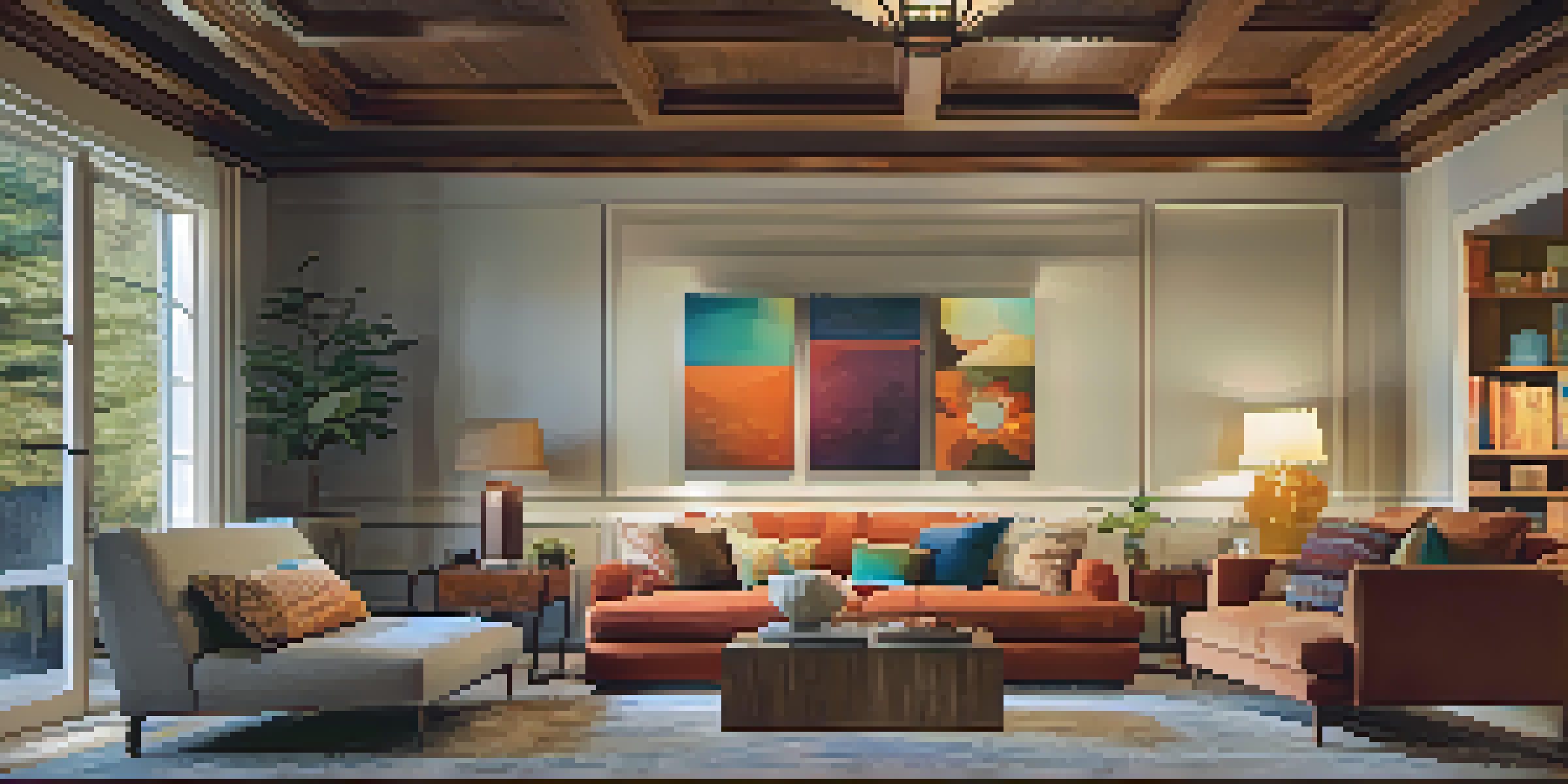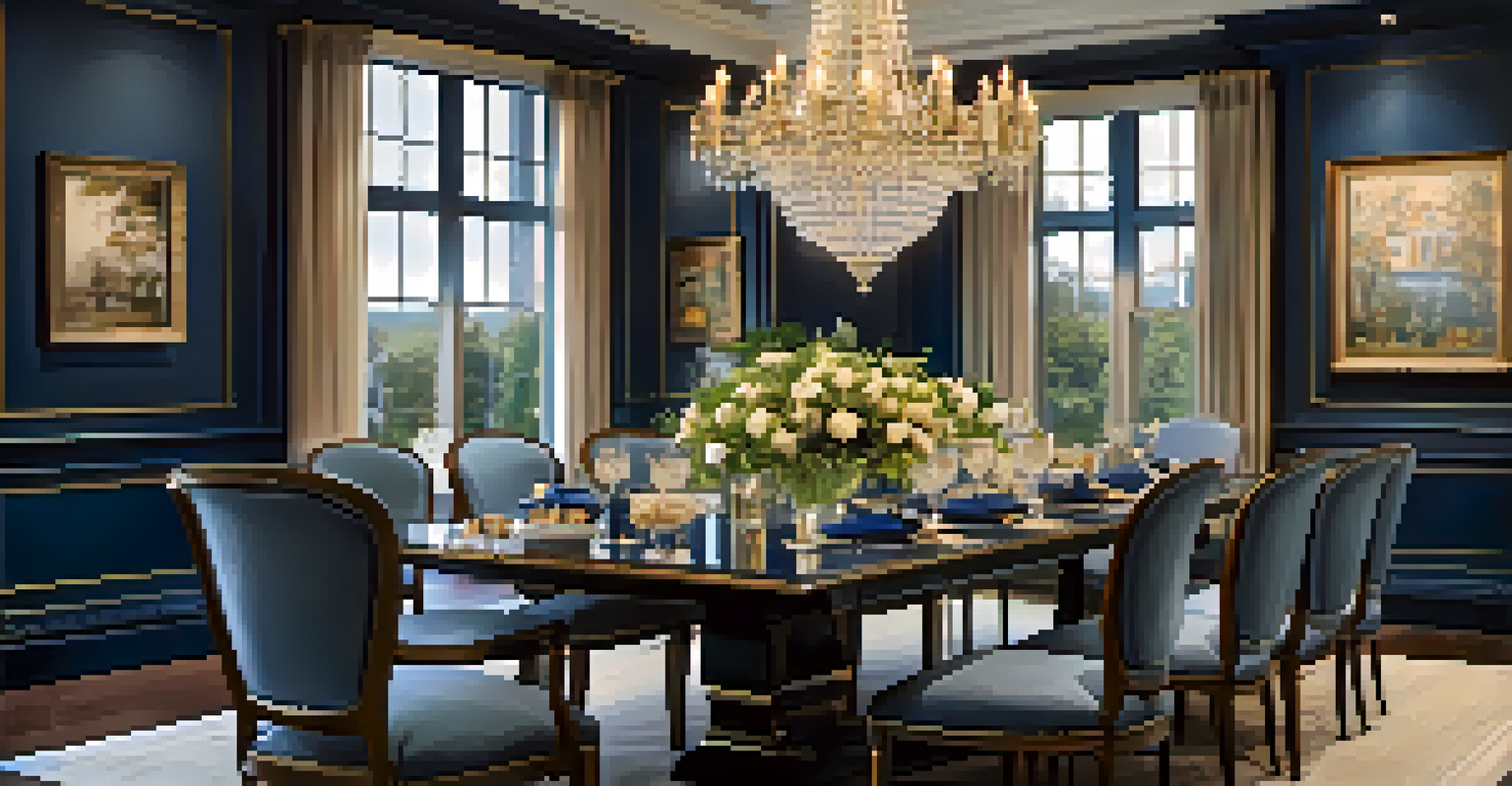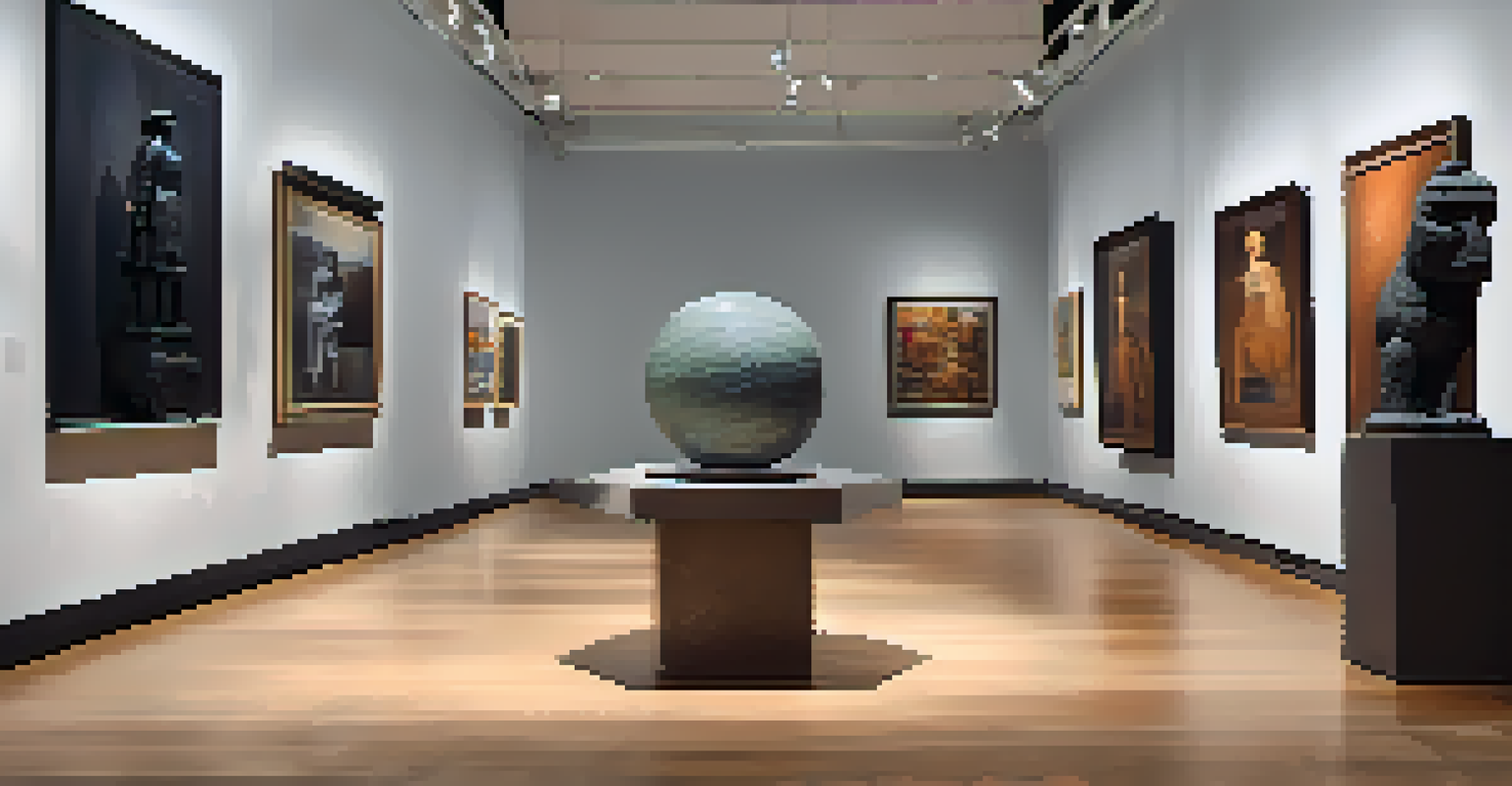Using Lighting to Highlight Artwork and Decor Features

The Importance of Lighting in Interior Design
Lighting plays a crucial role in interior design, influencing mood and perception. Properly placed light can draw attention to key elements like artwork and decor, creating a focal point in a room. Think of lighting as the brush that paints the canvas of your space, enhancing textures and colors while setting the overall tone.
Lighting is the first layer of your design, the most important element in creating a mood and ambiance that reflects your personality.
When we walk into a room, our eyes are naturally drawn to the brightest points. By strategically using light, you can guide this attention to your favorite pieces, making them stand out. This is especially important in spaces where you want to create an inviting atmosphere, such as living rooms or galleries.
Moreover, the right lighting can transform an ordinary space into an extraordinary one. It can highlight the intricate details of a sculpture or the vibrant hues of a painting, adding depth and dimension. So, understanding lighting's role is essential for any home decorator or art enthusiast.
Types of Lighting and Their Effects
There are three main types of lighting: ambient, task, and accent. Ambient lighting provides overall illumination, task lighting helps with specific activities, and accent lighting is used to highlight particular features. Each type plays a unique role in enhancing your decor, and knowing how to use them can change the game.

For instance, consider using ambient lighting to create a warm atmosphere in your living room. A ceiling fixture or soft wall sconces can provide the base layer of light. Then, you can add task lighting, like a table lamp for reading, to ensure functional areas are well-lit while maintaining comfort.
Lighting Shapes Mood and Focus
Properly placed lighting enhances the atmosphere of a room and highlights key decor elements.
Accent lighting, on the other hand, is your secret weapon for showcasing artwork. Picture a spotlight gently illuminating a beautiful painting or a picture light highlighting a framed photo. This focused light not only enhances the piece but also adds a touch of drama to the overall space.
Choosing the Right Fixtures for Your Space
When selecting lighting fixtures, consider the style, size, and scale of your space. A large, dramatic chandelier can serve as a stunning focal point in a spacious dining room, while sleek wall sconces might be perfect for a cozy hallway. The key is to find fixtures that complement your decor rather than overpower it.
There are no rules in design, but the purpose of lighting is to create an experience, not just a function.
Additionally, think about the color temperature of the bulbs you choose. Warm white bulbs create an inviting atmosphere, ideal for living spaces, while cooler white or daylight bulbs are better for work areas where clarity is essential. This choice can significantly impact how your artwork and decor appear.
Lastly, don’t forget about the practicality of your fixtures. Ensure that they are positioned in a way that provides ample light without creating glare or causing shadows on your artwork. This balance is vital for truly appreciating the pieces you’ve chosen to display.
Using Dimmers for Flexibility and Control
Dimmers are a fantastic addition to your lighting setup, offering flexibility and control over the ambiance of your space. By adjusting the brightness, you can create different moods throughout the day, from bright and energizing to soft and relaxing. This versatility is especially useful for spaces where you entertain guests or unwind after a long day.
For artwork display, dimmers allow you to highlight pieces without overwhelming them. Lowering the light can bring out the subtlety of a painting's colors or the texture of a sculpture. It’s like adjusting the volume of music to match the vibe of your gathering; the right level can enhance the experience tremendously.
Types of Lighting Enhance Spaces
Understanding ambient, task, and accent lighting allows for a dynamic and inviting environment.
Furthermore, using dimmers can save energy and extend the life of your bulbs. This means you can enjoy beautiful lighting while being mindful of both your energy bills and the environment. It's a win-win situation that will benefit both your space and your wallet.
Layering Light for Depth and Interest
Layering light involves combining different types of lighting to create a more dynamic and inviting atmosphere. This technique ensures that all areas of a room are illuminated while also providing visual interest. Think of it as dressing a cake; each layer adds flavor and texture, making the whole creation more appealing.
In a living room, for example, you might have ambient lighting from a ceiling fixture, task lighting from a floor lamp, and accent lighting highlighting artwork on the walls. This combination not only serves practical purposes but also enhances the room's character. Each layer contributes to an engaging visual narrative.
When layering light, consider the height and placement of your fixtures. Varying these elements can create a sense of depth, making the room feel larger and more inviting. Remember, the goal is to ensure that the light works harmoniously with your decor, showcasing your personal style.
Highlighting Specific Decor Features
To draw attention to specific decor features, such as a statement piece of art or a unique sculpture, use focused lighting techniques. Spotlights or adjustable track lighting can be positioned to illuminate these features, ensuring they capture the eye as soon as someone enters the room. This technique adds a professional touch to your decor.
Consider using wall-mounted fixtures that can be angled to highlight a particular piece. This not only enhances the artwork but can also create interesting shadows and highlights on the surrounding wall, adding another layer of visual appeal. It’s a simple yet effective way to make your decor stand out.
Dimmers Offer Versatility and Control
Using dimmers provides flexibility to adjust brightness, helping to create the perfect mood for any occasion.
Additionally, remember the importance of contrast. If your artwork is dark, a brighter light will create a striking effect. Conversely, if your decor is light, softer lighting can enhance its features without overpowering them. This careful consideration can make all the difference in how your space is perceived.
Maintaining and Adjusting Your Lighting Setup
Once your lighting is set up, ongoing maintenance is key to ensuring it continues to enhance your decor effectively. Regularly check bulbs and fixtures for any issues and replace them as needed. This simple task can prevent dim or dead spots that detract from the overall aesthetic.
As seasons change or you acquire new artwork, be open to adjusting your lighting setup. Sometimes, a slight shift in position or brightness can make a world of difference. Just like rearranging furniture, changing up your lighting can breathe new life into your space.

Lastly, consider the trends in lighting design. Staying informed about new fixtures, technologies, and styles can inspire fresh ideas for your space. Embracing change keeps your decor feeling current and reflects your evolving personal style.